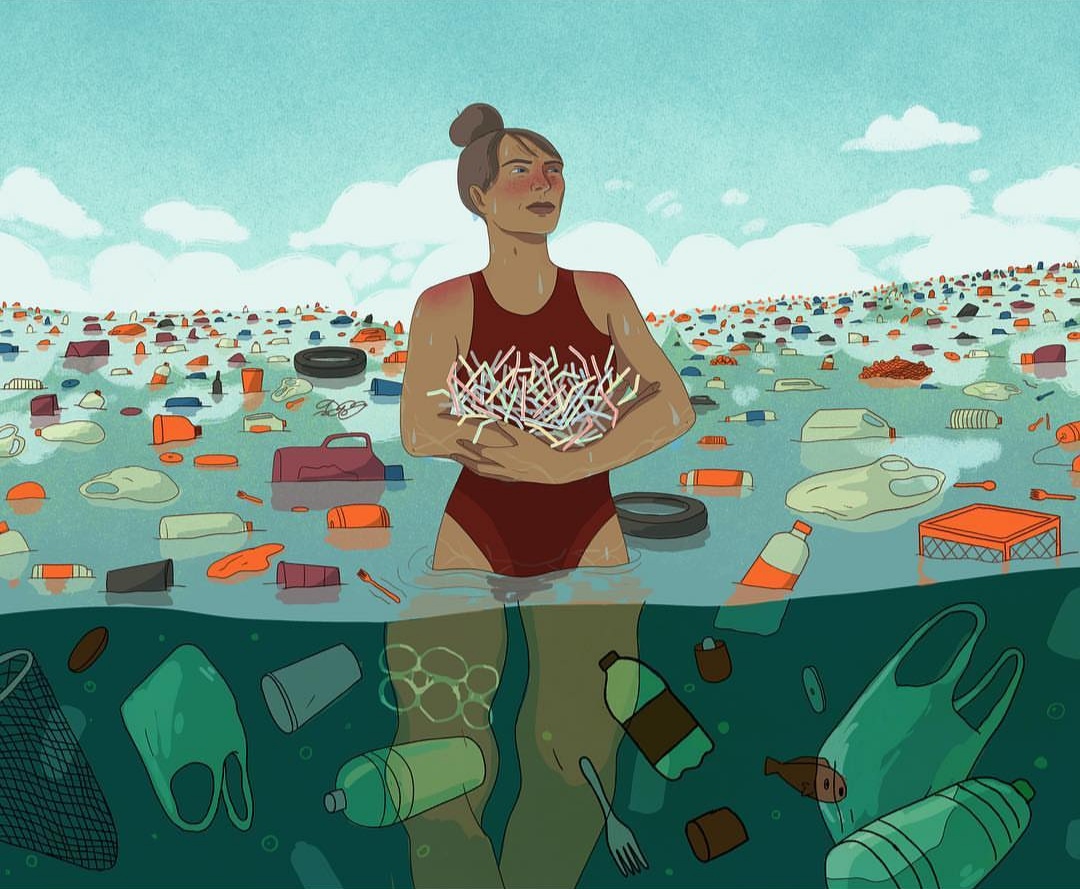Thoughts on Recycled Art

Recycled Art for me is quite fascinating. It is usually recognized as the use of garbage and found objects in the process of creating art. This process is categorized by the artist’s interaction with a material already potent in symbolic meaning, prompting the artist to embed a certain message of social critique. In its essence, Recycled Art is conceptual and political.
Art and recycling goes hand-in-hand. The artists or Eco-artists, find inspiration in the unlikeliest of places and transform old, recycled and resued objects into amazing pieces of contemporary art, adding another perspective to it, expressing their emotions and ideas.
The idea of reusing old materials to make art isn't new. The trend started gaining prominence in 1980s when museums and galleries in the Western world opened their doors for such innovation and creativity.

Early American settlers used bits of fabric from flour sacks and old clothing to make patchwork quilts. During World War I, soldiers in the trenches sometimes took spent artillery shells and carved images on them to make artwork. In both cases, people used available scraps from objects that had served another purpose to create new, original works of art.
The early 20th century was pivotal in the development of recycled art. Around 1912, artist Pablo Picasso (1881-1973) invented a process called collage, where he pasted together bits of paper, photos, newsprints and small objects to form a new image. Picasso also made sculptures from bits of wood and other scavenged materials.
A few years later, artist Marcel Duchamp (1887-1968) used found objects to create art. Found objects are objects made for other purposes that find their way into art. Duchamp was part of an art movement called Dada that emerged in reaction to the horrors of World War I. Dada confronted the viewer's expectations and challenged ideas about art. Duchamp used bicycle tires, wooden furniture and even a ceramic urinal from a bathroom in his sculptures. Sometimes he merged them together, but in the case of the urinal, he signed a name to it and exhibited it as it was. He chose mass-produced objects, things recognizable and available to everyone. His idea? That art could be deemed 'Art' by the artist's will. It didn't have to be an elaborate oil painting or a sculpture carved from marble.
Today, many artists work in a manner that could be called recycled art. For example, Indian artist Deepa Melkote, her speciality lies in creating intricate collages—using postage stamps! Each of her piece comprises of vivid stamps that have been segregated, cut into tiny pieces and glued neatly onto a sketch that ranges from historical monuments, dancers in colourful lehengas, brightly coloured birds and mythological figures.
Skills and ideas together can power the artist's creation and the fact that we all have trash can actually facilitate the entire process. Think of everything you do during the day that generates empty boxes, bottles, plastic wrap and other things you throw away. An artist’s imagination spins into high gear when working with recycled and repurposed items. In the hands of a mixed-media artist, rusty gears, old toys, scraps of cloth, an old book, building supplies, or plastic mesh have the potential to become much more than what they were intended for—it’s all in how one sees them. Assemblage is a fantastic way to incorporate recycled pieces. At its heart, recycled art is about repurposing and reusing materials. There's no limit to what kinds of materials can be used. It can be large or small; two dimensional or three dimensional. You might sometimes see it called 'junk art', but that term is a bit limiting. Something that is being recycled isn't necessarily junk.
The purpose of recycled art is this: to encourage the reuse of variety of materials in new, different and creative forms, and to promote recycling and resource conservation. Eco-artists, by what they are doing are fairly contributing to the Green Movement taking place in different spheres of life. By finding innovative ways to show their concern for the environment they are encouraging the masses to reuse, reduce and recycle for a better future.
Moreover, it presents a great lesson: do not underestimate the power of even the smallest part of trash. I think, this is the true beauty of recycled art, showing us that with belief and passion, even abandoned items can become one of the most beautiful art in the world.
References:
1. Bojan Maric, One Man's Trash is Another Man's Recycled Art [August 28, 2016]
2. Stephanie Przybylek, Recycled Art: History & Materials.
3. Fatima Al-Banna, Recycling and Artwork.
Featured image by Lily Padula, via Instagram.









